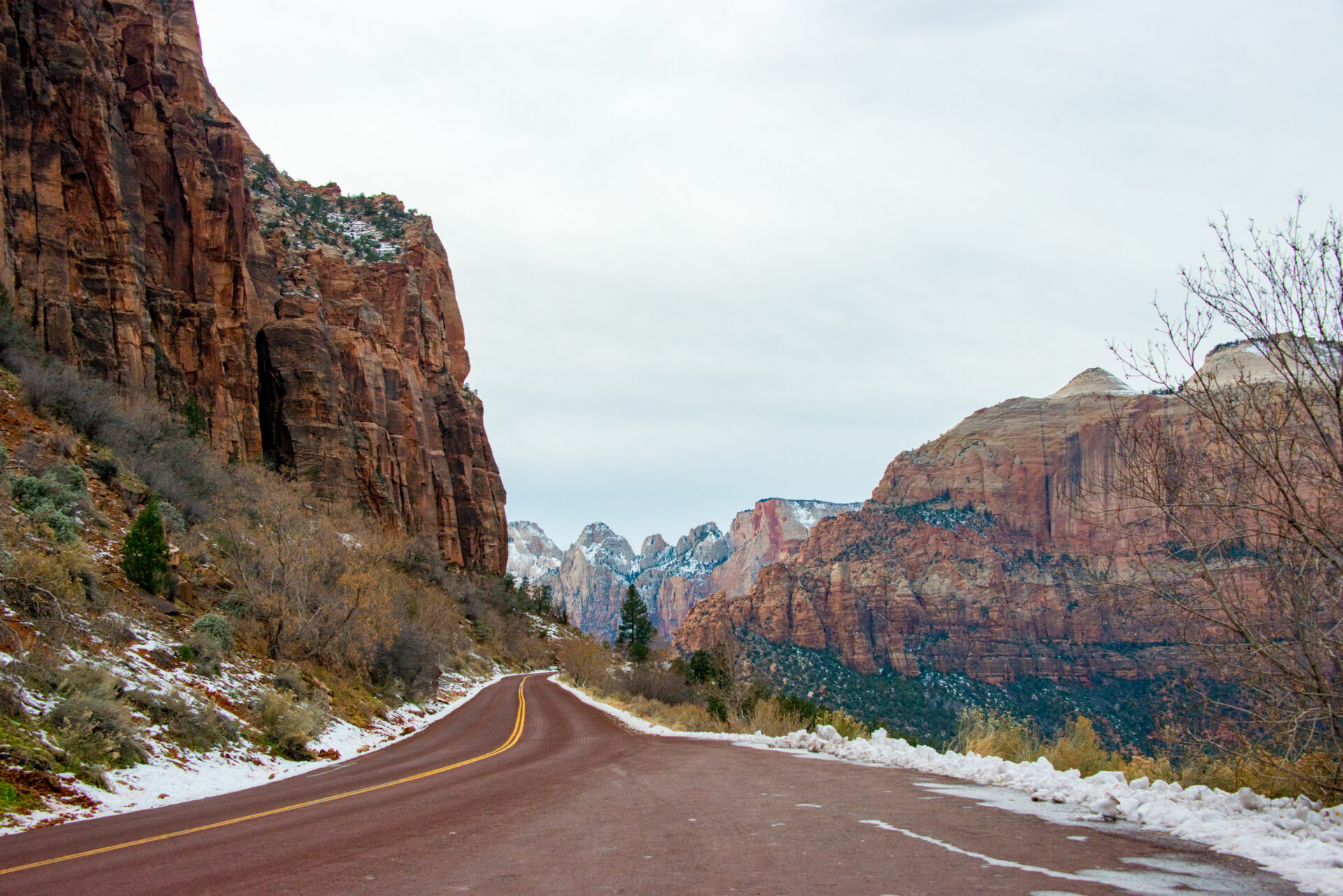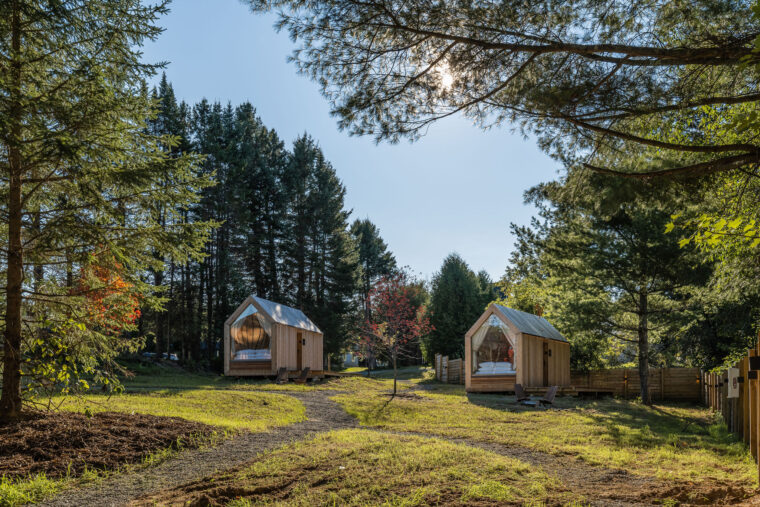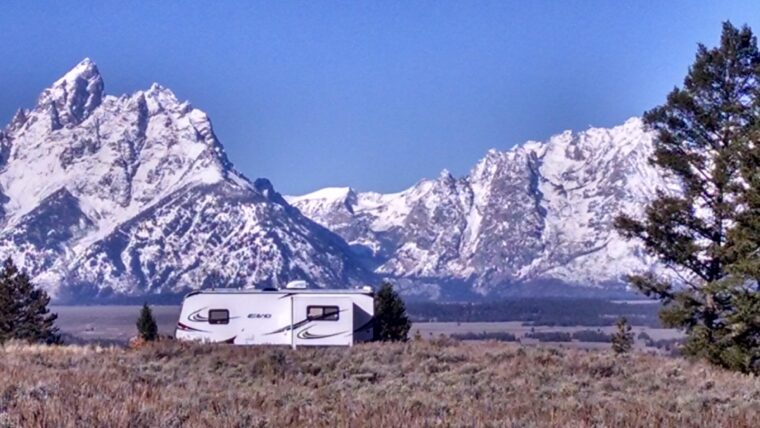There is something particularly peaceful about waking up to a silent winter landscape and watching the morning sun gradually melt frost from the trees. One day we saw minus 13 degrees Fahrenheit and the air sparkled with ice crystals. Other winter days are better enjoyed from the inside of the van, under a blanket with a good book.
Regardless of what winter throws at us, it’s wonderfully peaceful because there’s usually no one else around. But that’s also one of the dangers. Since winter weather is unpredictable, preparedness is key for safety and comfort.
Here are a few things we’ve learned from spending years refining our winter boondocking techniques.
Heating Your Living Space
If you’re boondocking for more than a night or two, you’ll want an alternative heat source to your built-in furnace, since its fan uses an unsustainable amount of power. Some alternatives are:
Propane space heater: This is the most affordable option, especially if you run it off of a 5- or 20-pound propane tank instead of green disposable bottles. The Mr. Heater brand’s Buddy heaters are decently quiet, require no electricity, and the propane adds a little moisture to dry winter air. However, if you’re camping in extremely cold temperatures, the condensation produced by combusting propane can become troublesome and create an unhealthy environment, including mold and mildew inside walls.
Catalytic heater: This also runs off of propane and uses no electricity, but instead of having an open flame, it uses a catalyzed chemical reaction to make heat. Catalytic heaters are better for air quality and decently efficient on propane use, but cost considerably more.
Diesel heater: Especially popular in van conversions, these burn fuel from your vehicle’s tank or from a separate container. They are efficient, but require some installation, as well as a 12-volt electrical supply.
Ceramic disc heaters: These will help dry out the air if you’re in a humid area, but are noisy and use a lot of power, so they aren’t practical for long-term use.
Portable radiator: These are very quiet and don’t reduce air quality, but it takes a while for the oil inside of them to heat up. Portable radiators also use a lot of power, so they aren’t necessarily practical for boondocking.
Down blankets: Though many people run portable heaters overnight, we are overly cautious and only use them for short periods of time, just long enough to increase the temperature. Otherwise, we rely on a big, puffy down blanket, which keeps us amply warm.
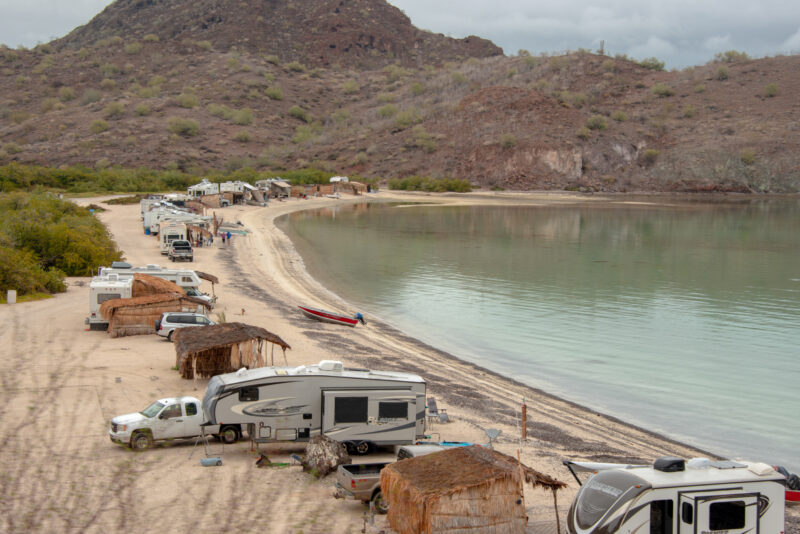
Safety and power
It’s vital to strictly adhere to product safety guidelines. Improper venting can be deadly, not just from carbon monoxide, but from oxygen levels getting too low. Also, look for safety features on catalytic and propane heaters like low-oxygen sensors and automatic tip-over shutoffs. Buy models designed for indoor use and keep them covered when not in use to reduce dust buildup, which can lower air quality. Always have a working carbon monoxide and propane detector on board, and keep the bulk propane tanks outside of the vehicle.
If your heating source uses some electricity, it’s especially important to conserve as much power as possible to make sure there’s enough leftover to keep you and the RV’s systems running comfortably. For example, choose the gas grill over the toaster, use solar-rechargeable lighting, and turn off your auto-retracting step. You can replace it with a sturdy plastic one, which also ensures your auto-step doesn’t get frozen in the out position.
Insider Tip: To track how much power various items draw, use smart plugs that monitor energy usage.
Focus on Weatherproofing
A vehicle that keeps out the cold means you don’t have to run the heater as much, and your rig’s systems are less vulnerable to freezing temperatures.
Insulation: Heat is lost through windows and vents. Reflective insulation like Reflectix is popular for sealing up windows, but blankets work, too. You can buy or make foam inserts for openings like ceiling fans and vents, but take care to keep enough ventilation for safety, and don’t block air vents going to appliances. Also, before you head out, check your window seals and weather stripping, repair anything that’s amiss, and cover your A/C unit.

Skirting: Wind passing through the underside of your vehicle will suck out the heat, making you colder and jeopardizing your water pipes and tanks. Anything you can do to cover the open space under your vehicle will help, but for a more permanent solution, consider purchasing a custom snap-on skirt that fits your rig’s exact design.
Everything You Need to Know About RV Skirting Solutions
Floors: Throw rugs and carpets do wonders for mitigating cold air, making you feel more cozy, and keeping your feet happy.
Generator: Follow manufacturer specifications for how to winterize your generator. It will likely include a cold-weather treatment for the gas or fuel, and lighter-weight oil.
Everything You Need to Know About RV Generators
Batteries: The cold is hard on batteries, so before venturing into the winter wilderness, inspect them and replace them if they’re not in strong shape.
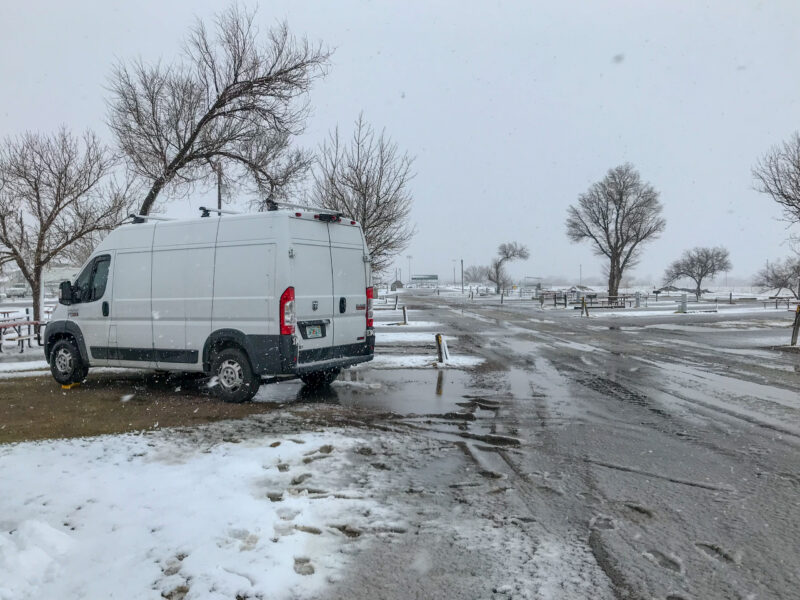
Protect Your Water Systems
If RV holding tanks, hot water tanks, or pipes freeze they’ll crack, so you need to figure out how to keep them warm. When you’re plugged in, typically your furnace will do the trick, but boondocking is a different story.
Skirting and insulation can help. So can heating tape on pipes and hoses, though that is often impractical because of the extra power demand. A small amount of RV antifreeze in your black and gray water tanks can also help keep them from freezing. In a pinch, open the cabinets in the bathrooms and kitchens to try to warm up the plumbing and keep faucets dripping.
Another option is to winterize your water systems, then not use them. You can still use your toilet, just flush with a small amount of antifreeze instead of water. Another option is using a cassette toilet.
Plan for a Storm
Snowstorms and sudden road closures are fair game in winter. When packing, assume something will go wrong—so you’ll be prepared when it does. Good things to bring include snow chains, a shovel, extra blankets or sleeping bags, snow boots, a first aid kit, an emergency roadside kit, goggles, a headlamp and/or battery or solar-powered lanterns, extra water and food, and more propane than you think you’ll need.
How to Survive Extreme Weather in Your RV
Park Smart
When heading to a campsite, imagine what it and the road into it will look like after a snowstorm, and whether it will be too slippery or steep to navigate out of. Also keep in mind that there are clay roads in the desert and elsewhere that get too slick to drive when wet, and others that get easily rutted out and ruined under those conditions.
When choosing a camping spot, try to find one that is sheltered from the wind. If you can’t, then point the front or back of your vehicle into the wind to minimize heat loss. Also, try to make use of passive solar by parking with your broadside facing whichever direction looks like it will get the most sunlight (that’s often to the south). Don’t park under cliffs or steep, rocky hillsides, as freezing, thawing, and precipitation can cause rocks to dislodge.
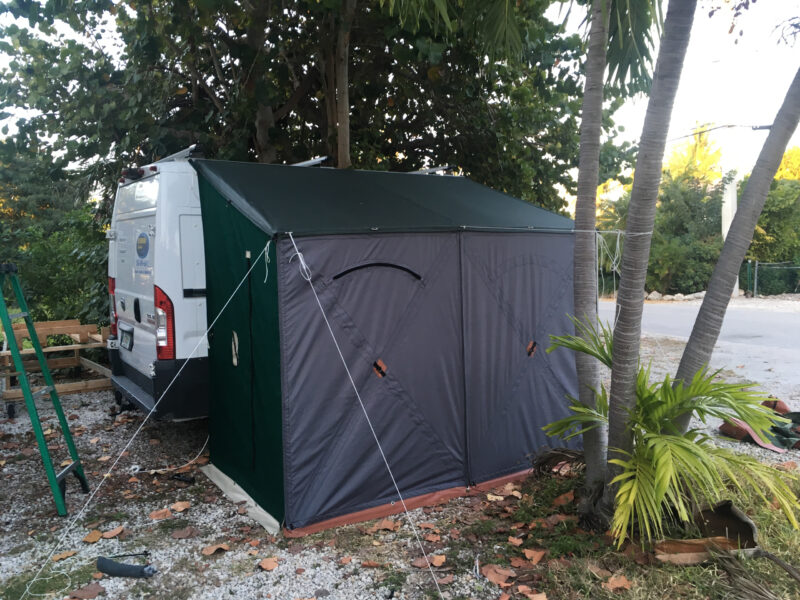
Embrace the Season
Dressing warm and in layers makes chilly days tolerable. Try fun activities, like cross-country skiing, sledding, and simply playing in the snow. Don’t forget a good board game, books, and maybe even a sketch pad and journal. But also know your limits, and find warmer ground if you aren’t having fun.
Additional Precautions and Tips
- Enable alerts on your weather app and check forecasts often.
- If you’re also staying in campgrounds, check along your route to see what is open and if they still have running water available.
- Keep your plans flexible, so you can safely dodge storms.
- Understand clothing layering for cold-weather comfort.
- Use wood under your stabilizing jacks so they don’t get stuck to the ground.
- Remember your hands (and tongue) will stick to metal if they’re moist.
- Door handles and other plastics become brittle in the cold.
- Clear snow from the roof and make sure vents are clear.
- Shovel snow from your site before parking.
- Use your outdoor mat or carpet to keep your entrance from getting muddy and icy.
- A winter campfire and a heated camp chair are divine, and so are a good pair of slippers or down booties.
- Add some colored lights to your outside and inside space for extra winter cheer.
This article has links to products that were carefully selected by our editors. We may earn commission on your purchases from these links.
